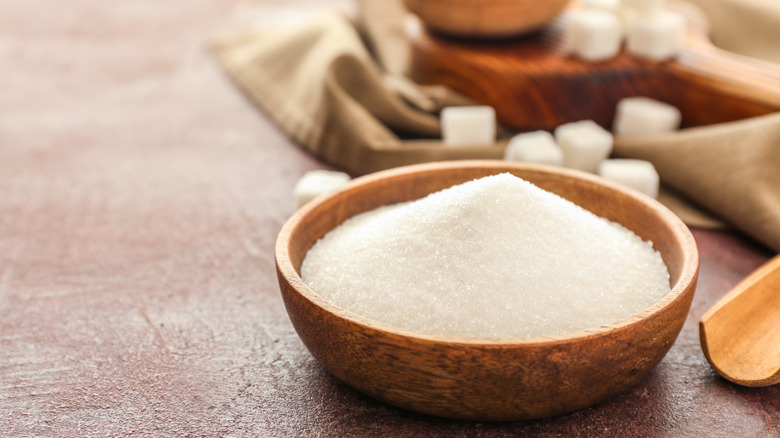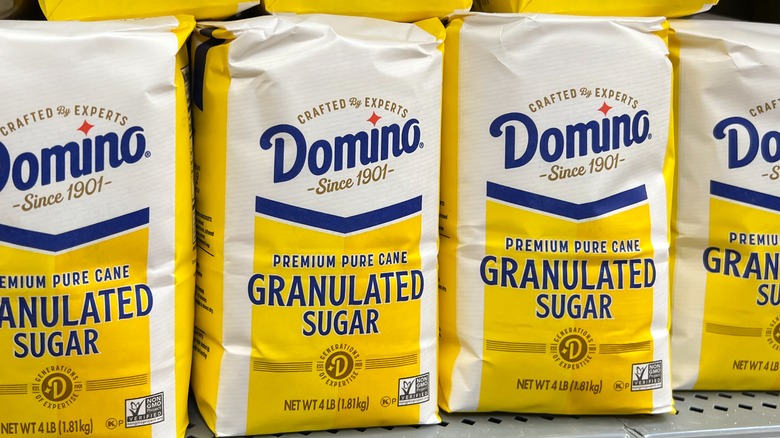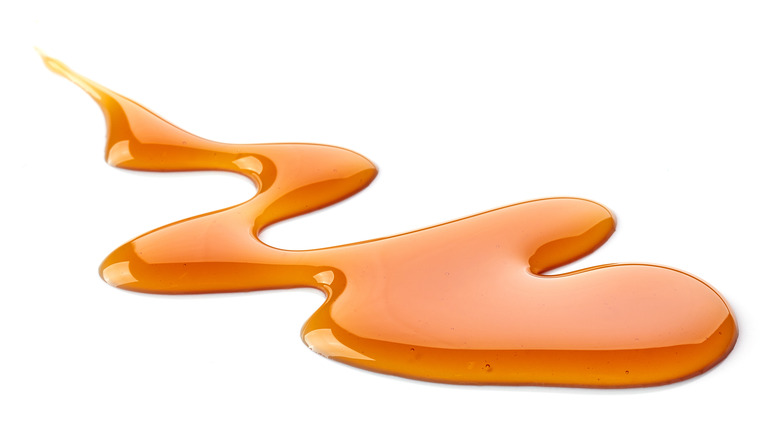The Simple Way To Upgrade The Taste Of Sugar
White sugar carries a heavy load in our kitchens. We use it to sweeten everything from our morning coffee to our favorite batch of chocolate chip cookies. We take for granted that sugar also determines the structure, moisture, texture, and shelf life of our baked goods. But, white sugar's flavor is one-dimensional. It's just sweet. That said, can you upgrade the taste of sugar?
Cooks know that color equals flavor. They're usually talking about color as a result of the Maillard reaction's delicious process of changing amino acids and sugars in our food. But, as Science Friday explains, color affects our sense of flavor even without chemical changes like the browning of a steak. Brown sugar is the most common way to level up sugar's impact. Because brown sugar is just white sugar coated with molasses, you're not really changing things, you're just adding more flavor. Molasses' earthy, bitter notes might not be a flavor you want to include.
Cooking white sugar into caramel is a way to deepen and add complexity without molasses' heavy-handedness. As sugar caramelizes and deepens in color, it undergoes complex reactions that change its structure, flavor, and sweetness. But, it's difficult (and dangerous) to incorporate molten sugar into a cake recipe. Don't fret, there's a simple way to add caramel's molasses-free complexity to plain old white sugar.
Upgrade your sugar by baking it before baking
Savvy bakers know that caramel, brown sugar, and white sugar's differences are more than just color, texture, and flavor. Acidity levels and sweetness is affected by those different processes and ingredients. Most bakers also know that sugar melts at 367 degrees Fahrenheit (per Scientific American) but starts to caramelize at only 320 degrees Fahrenheit (per Science of Cooking). What happens between those temperatures?
Getting white sugar into that sweet spot would yield sugar that's developed some toasted color and nutty flavors while maintaining white sugar's familiar and easy-to-use form. Thankfully, that temperature range is easily achieved in our ovens.
According to King Arthur Baking, "Pour sugar into a glass or ceramic 9" x 13" pan. Avoid using a metal pan–it will conduct more heat and is likely to melt the sugar." Bake this in an oven set to 325 degrees Fahrenheit. This is the key, that temperature doesn't melt the sugar, but will add those toasty flavors. This will take one to four hours and be sure to stir every half hour to avoid clumps.
Store this in an airtight container indefinitely. It can be used pound for pound in any recipe that calls for white sugar. Remember, that the flavor developed via toasting is mild. So, highlight this in recipes that are simply flavored, such as angel food cake, or sugar cookies, sub this for powdered sugar in whipped cream, or a golden-hued simple syrup.
A few more steps for another sugar upgrade
The longer you toast, the color will deepen and the flavor will continue to develop. In fact, you can take this one step further. Bigger Bolder Baking bakes a smaller amount of sugar on a sheet pan lined with a silicone mat. That pan goes into a preheated 360 degrees Fahrenheit oven for less than half an hour. You want to let the sugar just start to melt. This caramelized sugar can then be cooled to harden, crumbled, and blitzed until fine in a food processor.
This is best kept in an airtight container in the freezer. It can be used just like toasted sugar but remember that as the sugar melted and caramelized, the sweetness is lessened. So, you'll need to use a larger volume of caramelized sugar. At least double, possibly quadruple, the amount of granulated white sugar. Also, this will remelt quickly and start the caramelization where it left off. So, higher temperatures can lead to colors that are much darker and with a bitter flavor. Caramelized sugar is trickier to use but will certainly upgrade the taste of sugar in your kitchen.


